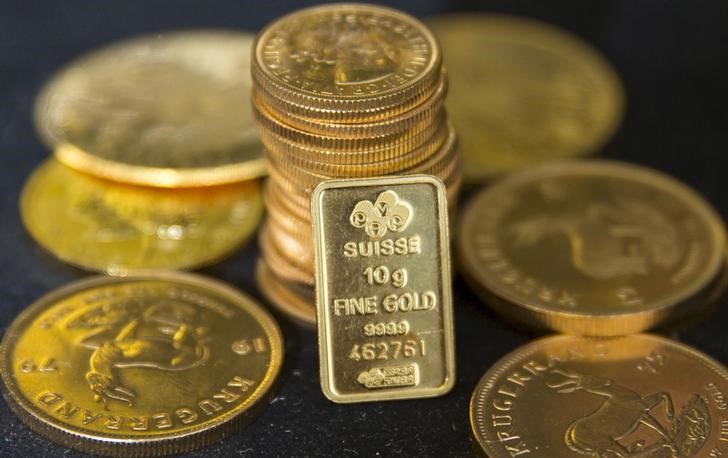By Geoffrey Smith
Investing.com -- Gold prices edged higher on Thursday but stayed at the lower end of their recent range, as risk assets refused to give up most of the gains posted in a sharp three-day rally.
Demand for bullion was however supported by signs that the economic bounce-back from the Coronavirus pandemic is not proceeding smoothly, as continuing jobless claims rose by some 650,000 in the week through May 22, instead of declining as expected.
Initial jobless claims fell below 2 million last week for the first time since March, but remained stubbornly high at 1.88 million, suggesting that pressure on businesses across the country is still intense.
“The rate of decay of claims has slowed, disappointingly, and we think the first sub-1M reading won’t come until the first week of July,” wrote Ian Shepherdson, chief economist with Pantheon Macroeconomics, in a research note.
“By then, the cumulative increase in claims since the virus struck will be close to 50 million,” he added.
By 11:30 AM ET (1535 GMT), gold futures for delivery on the Comex exchange were up 0.8% at $1,718.05 a troy ounce, while spot gold was up 0.8% at $1,712.34.
Gold had closed at its lowest level in three weeks on Wednesday, only just above the optically important $1,700 level.
Silver futures rebounded 0.5% to trade just above $18 an ounce again, while platinum futures rose 0.5% to $864.95 an ounce.
Palladium futures underperformed, falling 2.7%, as the eagerly-anticipated fiscal stimulus package in Germany failed to include any incentives for buying new cars with internal combustion engines. Industrial demand for palladium comes almost exclusively from the auto sector.
Elsewhere, the European Central Bank also lived up to expectations in increasing the size of the Pandemic Emergency Purchase Program – its first line of defense against Covid-driven market disruptions – by 600 billion euros ($672 billion) to 1.35 billion. It also extended the timeframe for bond purchases under the program to the middle of next year.
While that should extend the period of ultra-low returns on eurozone bonds and therefore support gold prices, it also – together with the German fiscal package – arguably gives a more solid footing to the recovery, which may lure European gold buyers back into riskier assets sooner than otherwise likely.
Retail investor support for gold still looks historically strong, however. According to the World Gold Council, gold-backed ETFs added 154 tons to their holdings in May thanks to net inflows of $8.5 billion. That boosted global holdings to a new all-time high of 3,510 tons.
“Year-to-date, inflows (623 tons, or $33.7 billion) now exceed the highest level of annual inflows (591t) seen in 2009,” WGC strategist John Reade wrote.
